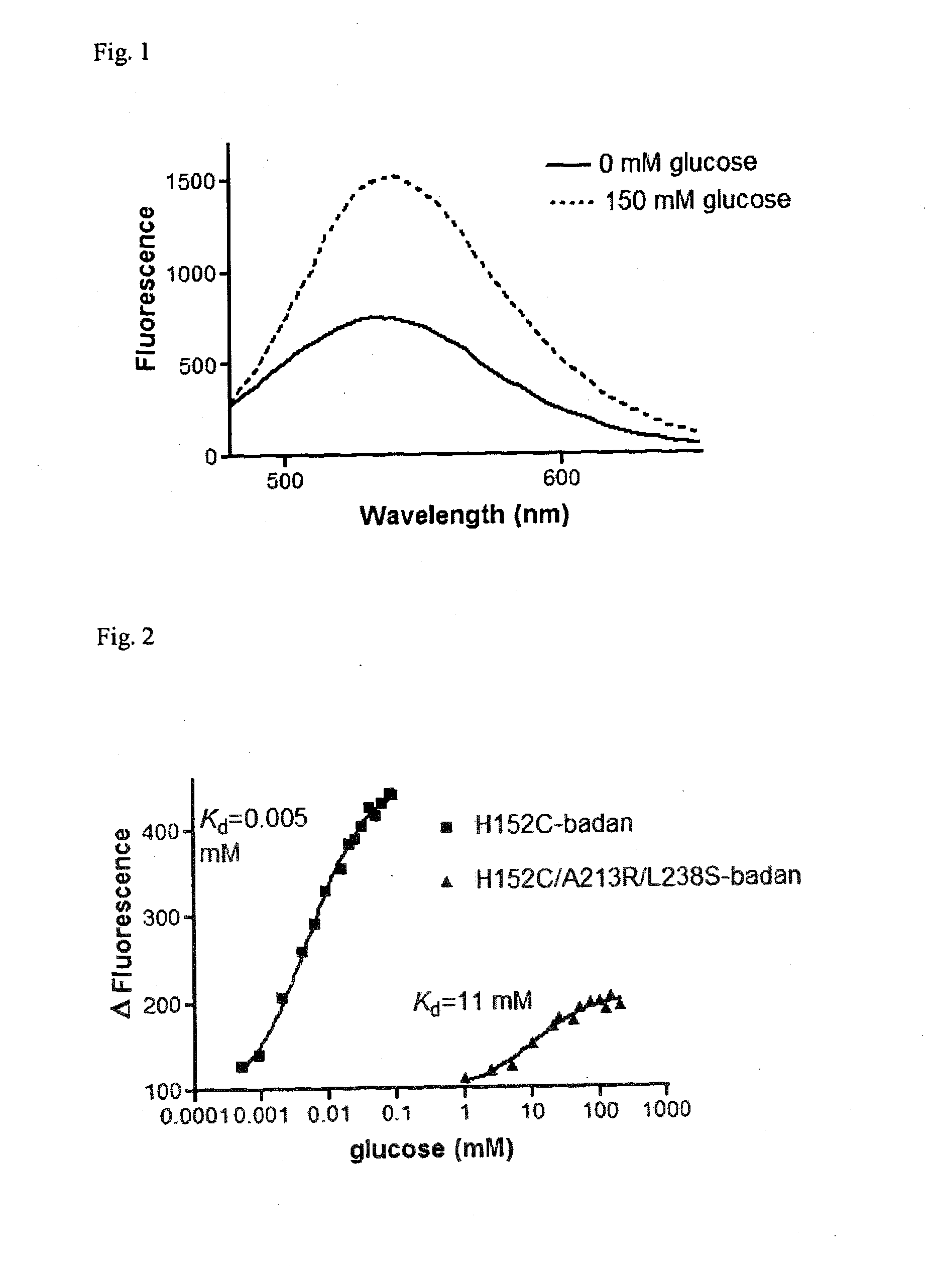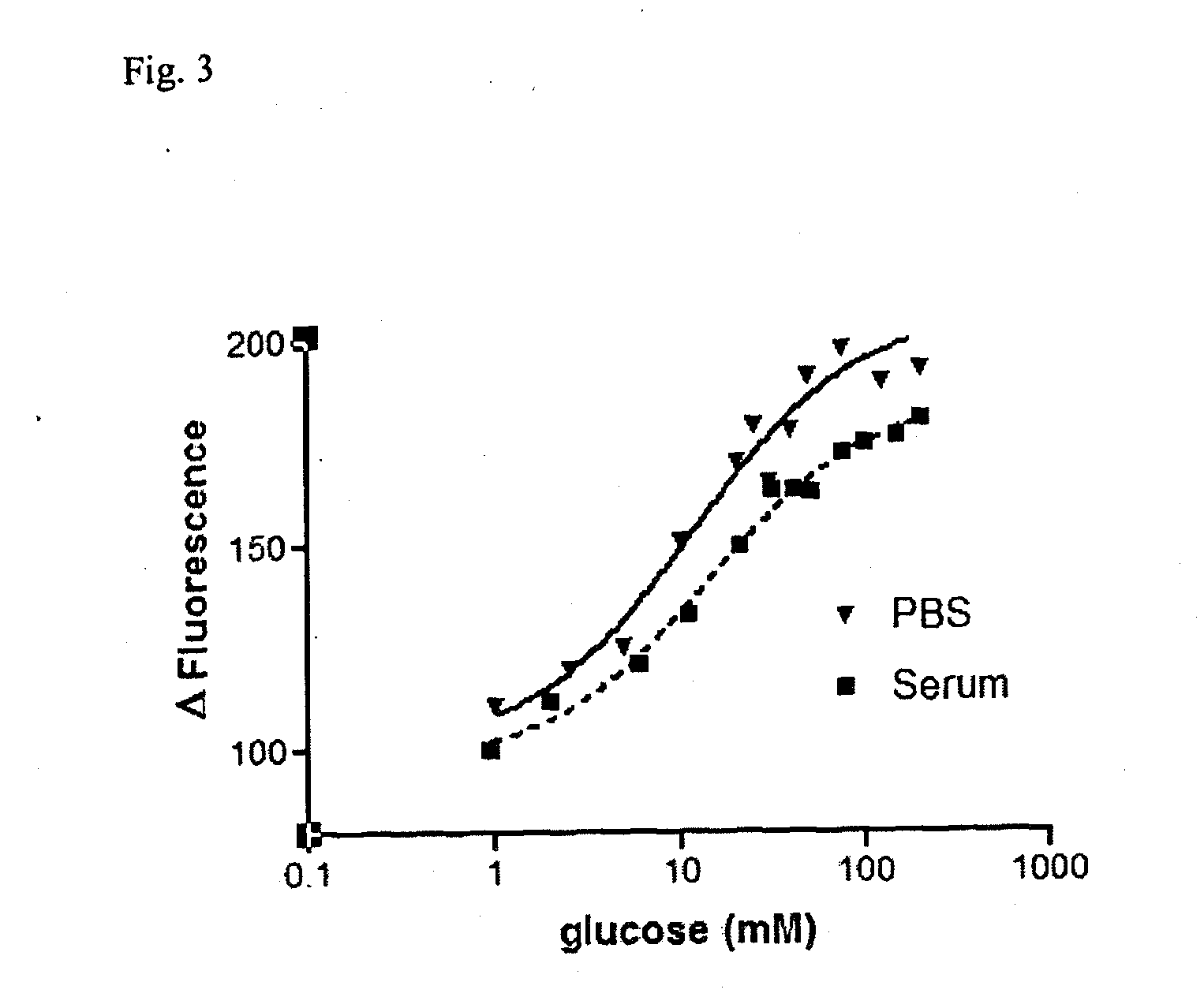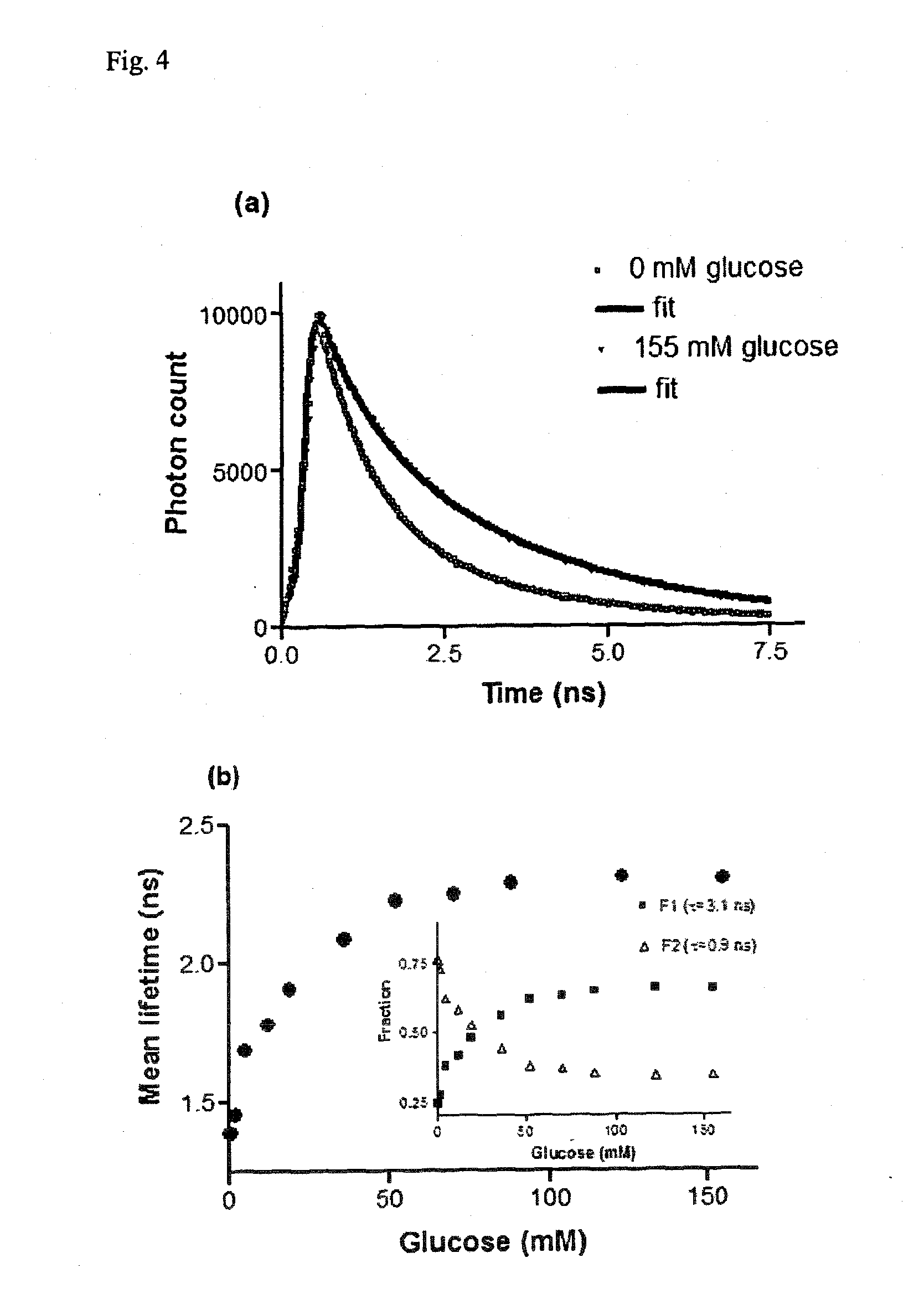Glucose sensor
a glucose sensor and sensor technology, applied in the field of glucose sensors, can solve the problems of inadequate changes in fluorescence characteristics of known glucose sensors upon glucose binding, problems such as sensitivity and response, and achieve excellent fluorescence intensity change upon glucose binding, accurate and reliable readout of glucose concentrations, and excellent responsiveness to glucose binding
- Summary
- Abstract
- Description
- Claims
- Application Information
AI Technical Summary
Benefits of technology
Problems solved by technology
Method used
Image
Examples
example 1
Construction of Expression Vector pET303-GBP and Purification of Mutants of GBP
[0144]Details of the methodology are given in Khan of al. [25]. In brief, the GBP gene (mgIB) was isolated from the plasmid pTZ18U-mgIB by PCR and ligated into pET303 / CT-His vector using a Rapid DNA ligation kit to form pET303-GBP. For the H152C, H152C / A213R, H152C / L238S and H152C / A213R / L238S mutants, pET303-GBP was used as a template. Site-directed mutagenesis was performed using the Quick-change mutagenesis kit with respective primers for each mutation. DNA sequencing data verified the presence of the desired mutations. A single colony of E. coli BL21(DE3) transformed with the pET303-GBP plasmid containing various mutants was inoculated in LB media containing 100 μg / ml of ampicillin and grown at 37° C. Expression of the proteins was induced by adding isopropyl-2-D-thiogalactopyranoside to a final concentration of 1 mM. Bacterial cells were lysed and the cell extract was clarified by centrifugation. Affi...
example 2
[0145]To label GBP mutants with badan, 50 μM protein was dissolved in 5 mM Tris(2-carboxyethyl)phosphine in phosphate-buffered saline (PBS) pH 7.4, and then a 10-fold excess of dye (500 μM) was added and the mixture incubated overnight at 4° C., after which it was purified on a Sephadex G-25 gel-filtration column.
example 3
Serum Preparation
[0146]Venous blood samples from healthy volunteers were collected in Vacuette tubes. The specimens were incubated at room temperature for 4 days to allow blood clotting and glycolysis. The samples were then centrifuged at 3500 g for 20 min and serum removed, pooled and stored until use. The glucose concentrations of serum samples were determined using a hexokinase-based assay (Sigma).
PUM
| Property | Measurement | Unit |
|---|---|---|
| Ka | aaaaa | aaaaa |
| Ka | aaaaa | aaaaa |
| pH | aaaaa | aaaaa |
Abstract
Description
Claims
Application Information
 Login to View More
Login to View More - R&D
- Intellectual Property
- Life Sciences
- Materials
- Tech Scout
- Unparalleled Data Quality
- Higher Quality Content
- 60% Fewer Hallucinations
Browse by: Latest US Patents, China's latest patents, Technical Efficacy Thesaurus, Application Domain, Technology Topic, Popular Technical Reports.
© 2025 PatSnap. All rights reserved.Legal|Privacy policy|Modern Slavery Act Transparency Statement|Sitemap|About US| Contact US: help@patsnap.com



